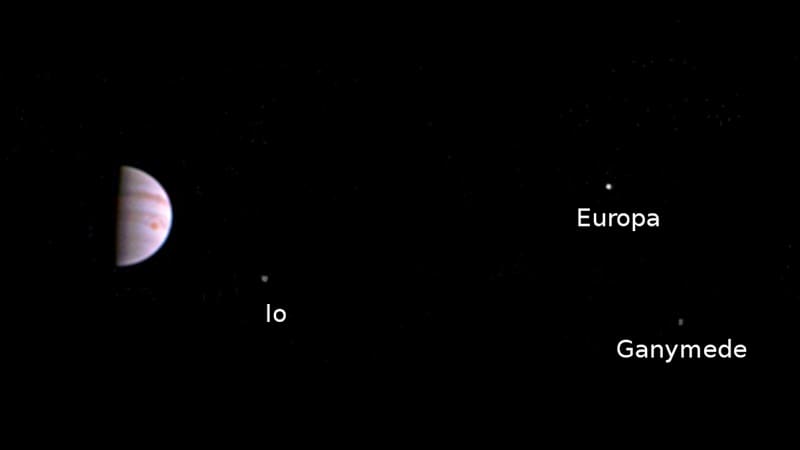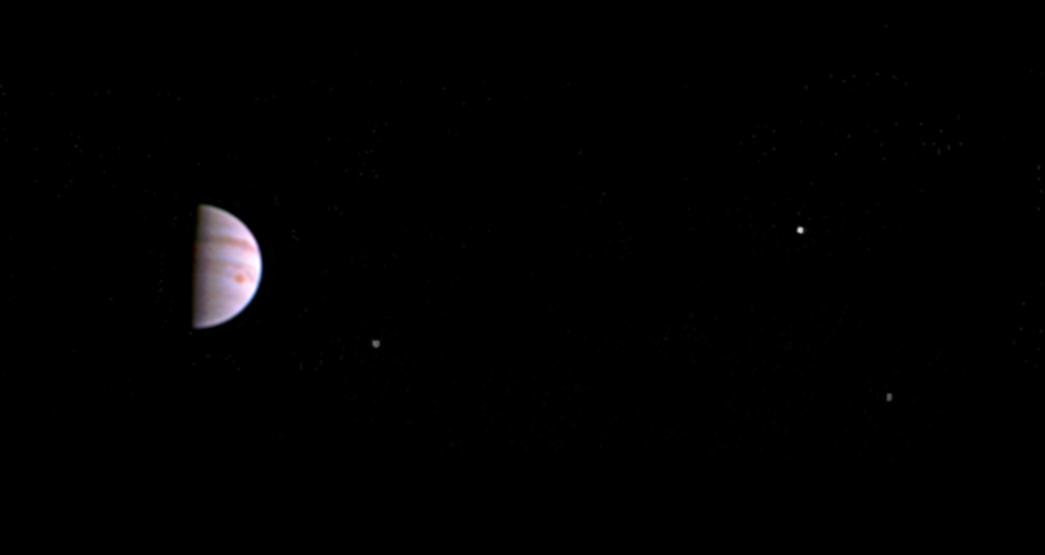Just when you thought the hype around the Juno spacecraft has died down, the mission has started producing the first images of Jupiter.
The JunoCam attached to the spacecraft started sending information back down to earth – the first data sent since arriving on July 4th – as it makes its way around the gigantic planet after being positioned in orbit.
The images beamed back are sadly not incredibly high-resolution; we will have to wait a bit longer for those to come through. What we do have, though, is the first look at what the gassy giant looks like up close, as seen from an orbiting spacecraft and not a powerful Earth-bound radio telescope.
“This scene from JunoCam indicates it survived its first pass through Jupiter’s extreme radiation environment without any degradation and is ready to take on Jupiter. We can’t wait to see the first view of Jupiter’s poles,” explained Scott Bolton, principal investigator from the Southwest Research Institute in San Antonio.
The first image sent back (above) was taken on 10th July when the craft was 4.3 million kilometres away from Jupiter. The satellite will circle the planet for 53 days, and will steadily get closer for a better look.
Nasa explained what is going on in the image: “The color (sic) image shows atmospheric features on Jupiter, including the famous Great Red Spot, and three of the massive planet’s four largest moons – Io, Europa and Ganymede, from left to right in the image.”
Those hoping to see some high-res images will have to wait until September.
“JunoCam will continue to take images as we go around in this first orbit. The first high-resolution images of the planet will be taken on August 27 when Juno makes its next close pass to Jupiter,” explained Candy Hansen, Juno co-investigator from the Planetary Science Institute located in Tucson, Arizona.
What is next for the craft and its JunoCam? Well, the little guy will be go around Jupiter 37 times in total, reaching a minimum distance of 4 100km. This will take it well underneath the cloud canopy, where it will study the planet’s auroras to learn more about Jupiter’s origins, structure, atmosphere and magnetosphere.
[Image – NASA]


